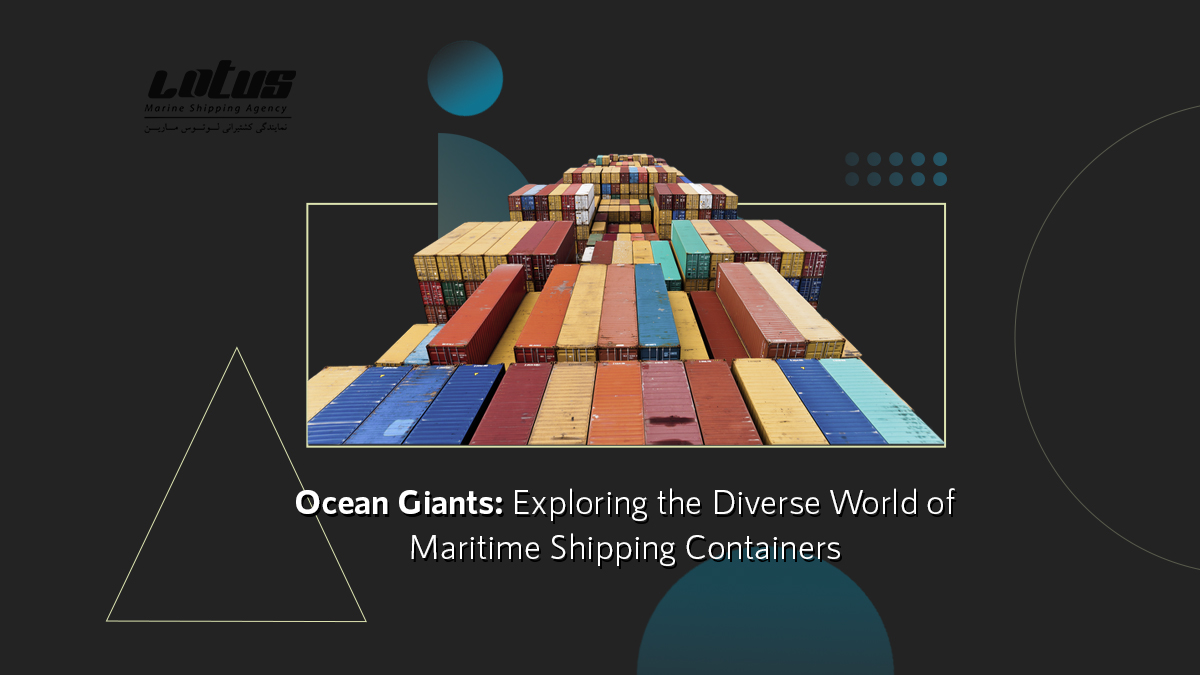Introduction to Maritime Shipping Containers
Shipping containers are the unsung heroes of global trade, silently powering the world’s economy from the shadows. From the first container ship that sailed in 1956 to today’s gargantuan vessels, the journey has been remarkable.
Types of Shipping Containers
Did you know that not all shipping containers are created equal? From the ubiquitous 20-foot standard container to specialized refrigerated units, the variety is staggering.
The Evolution of Container Sizes and Specifications
Here’s a fun fact: the standard shipping container size wasn’t always ‘standard’. Over time, industry demands have sculpted their dimensions for optimal efficiency.
The Journey of a Shipping Container
Imagine the life of a shipping container – from a factory floor in China to the high seas, and then onto trucks and trains to reach its final destination.
Innovations in Container Technology
In the digital age, even steel boxes aren’t left behind. Smart containers equipped with GPS and IoT technologies are revolutionizing how goods are tracked across the globe.
Container Shipping Companies: Giants of the Ocean
Companies like Maersk and MSC don’t just operate ships; they orchestrate a symphony of logistics that spans continents and oceans.
Global Trade and Containers
It’s not just about transporting goods; it’s about driving economies. The container shipping industry is a linchpin of the global trade system.
Challenges in Maritime Container Shipping
But it’s not all smooth sailing. Issues like environmental impact and piracy pose significant challenges to this global industry.
The Future of Shipping Containers
As we gaze into the crystal ball, the future of shipping containers is as dynamic as it is uncertain, with sustainability and technology at its core.
Impact of COVID-19 on Container Shipping
The pandemic threw a wrench in the works, disrupting supply chains worldwide. But it also accelerated some much-needed changes.
The Lifecycle of a Shipping Container
Ever wondered what happens to a container after its voyaging days are over? Some find new lives as trendy pop-up shops or cozy homes!
Container Ports and Terminals
Ports like Shanghai and Singapore aren’t just stops; they’re mega-hubs where the pulse of global trade can be felt most intensely.
Legal and Regulatory Framework
Navigating the complex seas of international regulations and safety standards is as crucial as navigating the literal seas.
Personal Stories: Life Aboard a Container Ship
Let’s not forget the human element. The stories of those who spend months at sea, ensuring our goods travel safely, are both inspiring and humbling.
Conclusion
As we conclude, it’s clear that the world of maritime shipping containers is as vast and deep as the oceans they traverse. With relentless innovation and an unyielding spirit, this industry is set to face the challenges of the future head-on.
FAQS
- What is the most common size of a shipping container? The most common size of a shipping container is the 20-foot standard container, known as a TEU (Twenty-foot Equivalent Unit). It measures 20 feet in length, 8 feet in width, and 8.6 feet in height. There’s also the 40-foot container, which is equally popular in global trade.
- How has container shipping changed due to the pandemic? The pandemic significantly impacted container shipping, leading to supply chain disruptions, port congestions, and increased shipping costs. It accelerated the adoption of digital solutions like real-time tracking and contactless operations. There’s also been a greater emphasis on building more resilient and diversified supply chains.
- What are ‘smart containers’ and how do they work? Smart containers are equipped with sensor technology and connected to the Internet of Things (IoT). They provide real-time data on location, temperature, humidity, and movement. This technology enhances the visibility of the cargo, improves security, and assists in efficient logistics management.
- Can shipping containers be reused for purposes other than shipping? Absolutely! Shipping containers are increasingly being repurposed for various uses, such as affordable housing, pop-up shops, cafes, offices, and even art installations. Their durability and modular design make them ideal for these innovative applications.
- What are the main environmental concerns with container shipping? The primary environmental concerns include greenhouse gas emissions from ships, oil spills, aquatic noise pollution, and the impact of shipping lanes on marine life. The industry is actively seeking ways to mitigate these impacts through cleaner fuel alternatives, improved energy efficiency, and sustainable practices.

